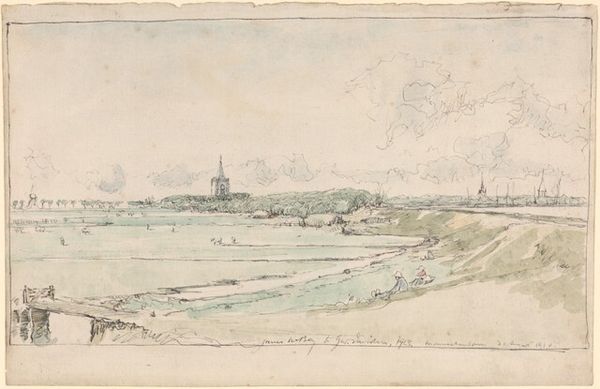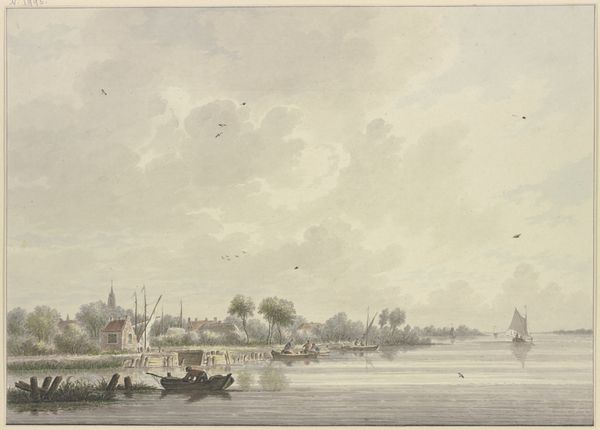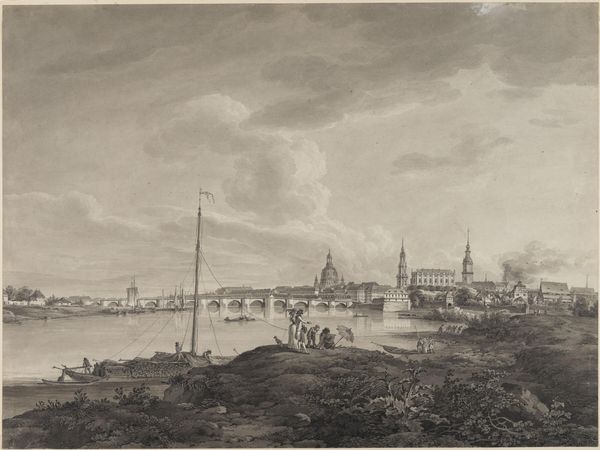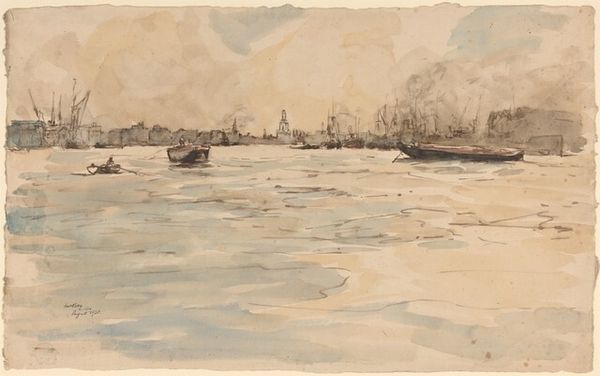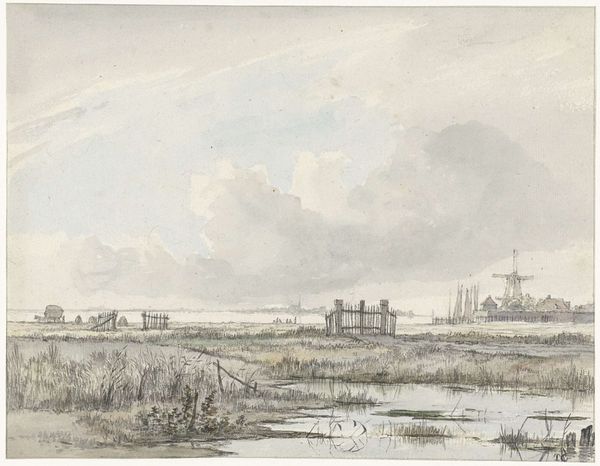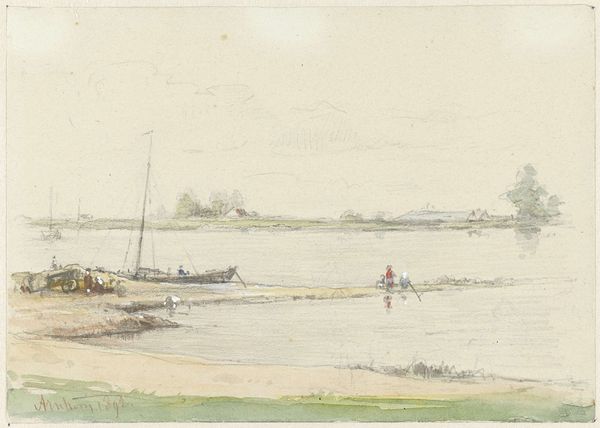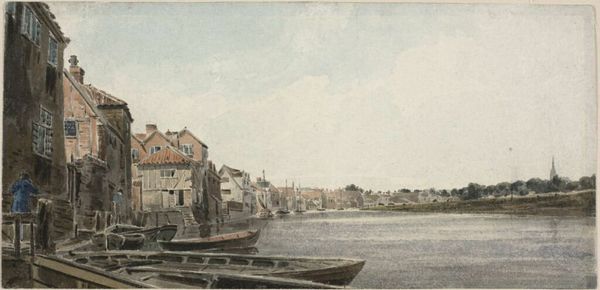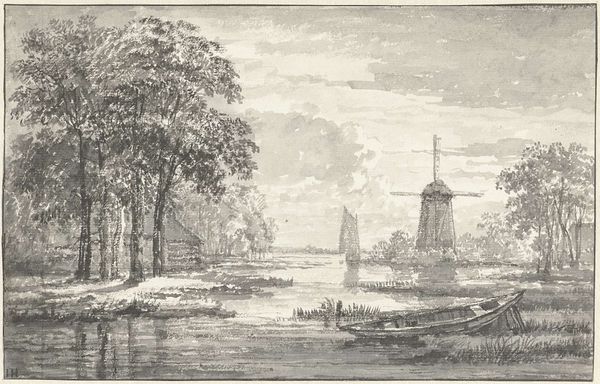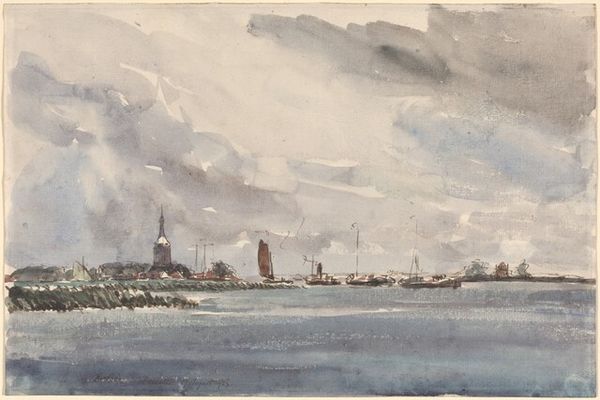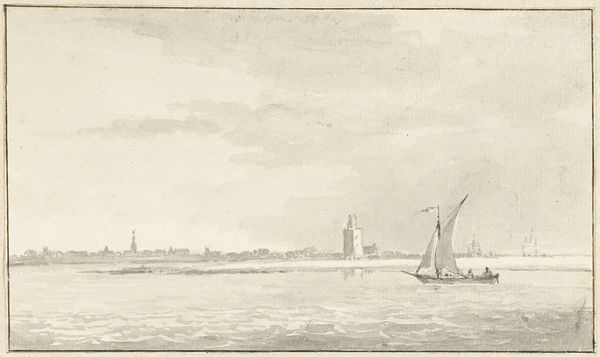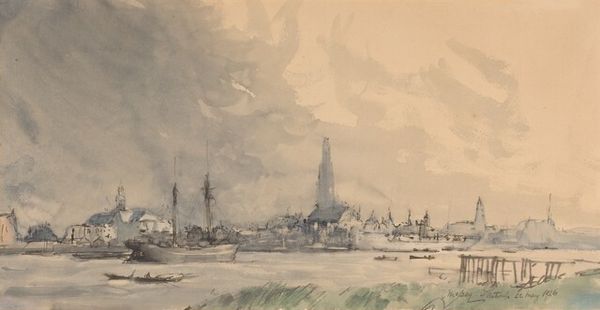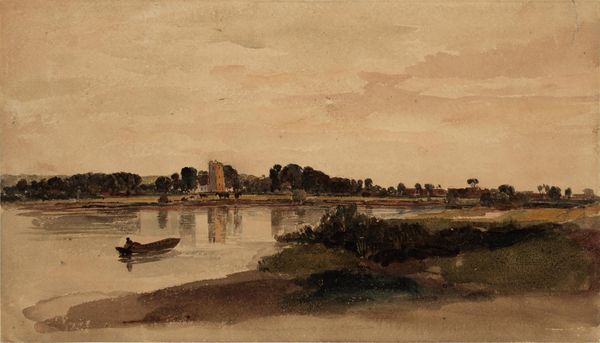
Dimensions: overall (approximate): 21.7 x 33.9 cm (8 9/16 x 13 3/8 in.)
Copyright: National Gallery of Art: CC0 1.0
Editor: James McBey's watercolor and mixed media drawing, "Sunset at Maldon, Essex" from 1922, gives me a melancholy feeling. The colors are muted, the lines are gestural and quick, and everything feels... unfinished, maybe? What catches your eye when you look at this piece? Curator: It’s the quiet tension, I think. You feel the vastness of the sky, almost pressing down, don’t you? But it's the subtle color shifts in that sky—the barest whispers of rose and lavender—that keeps it from feeling oppressive. The composition, off-kilter as it is, somehow brings you into the scene. It reminds me of half-remembered dreams, impressionistic, evocative. McBey was known for his etchings, a very precise art. But here, he's allowing himself to be much freer. Editor: So the medium is freeing? I mostly see how gloomy it looks. Curator: Perhaps. Though maybe he's reflecting a post-war gloom. Maldon itself, while lovely, is on the cusp of the sea, right? Water always makes me ponder transition and reflection. It’s almost as if he's not just capturing a sunset, but a feeling—that in-between moment when the day's energy dissipates, and we're left to contemplate. Do you get any sense of movement from it, from the boats, perhaps? Editor: Now that you mention it, yes! The boats, the slightly blurred lines...it all feels fleeting, like a memory fading. I initially felt downbeat about the darkness but recognizing this impressionistic style makes me reflect. Curator: Exactly! It’s a landscape of the mind as much as it is a physical place. Which makes it all the more powerful.
Comments
No comments
Be the first to comment and join the conversation on the ultimate creative platform.
